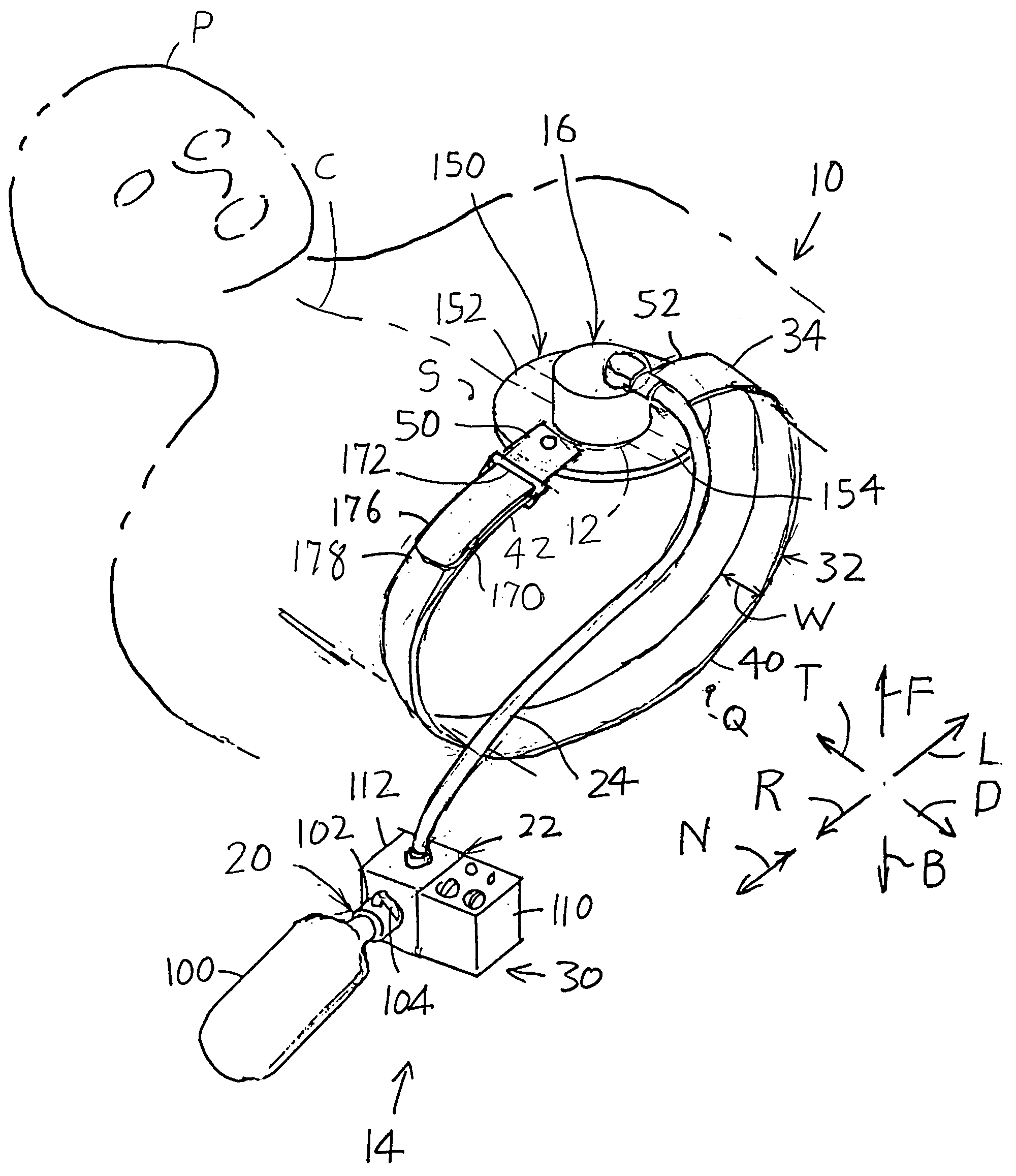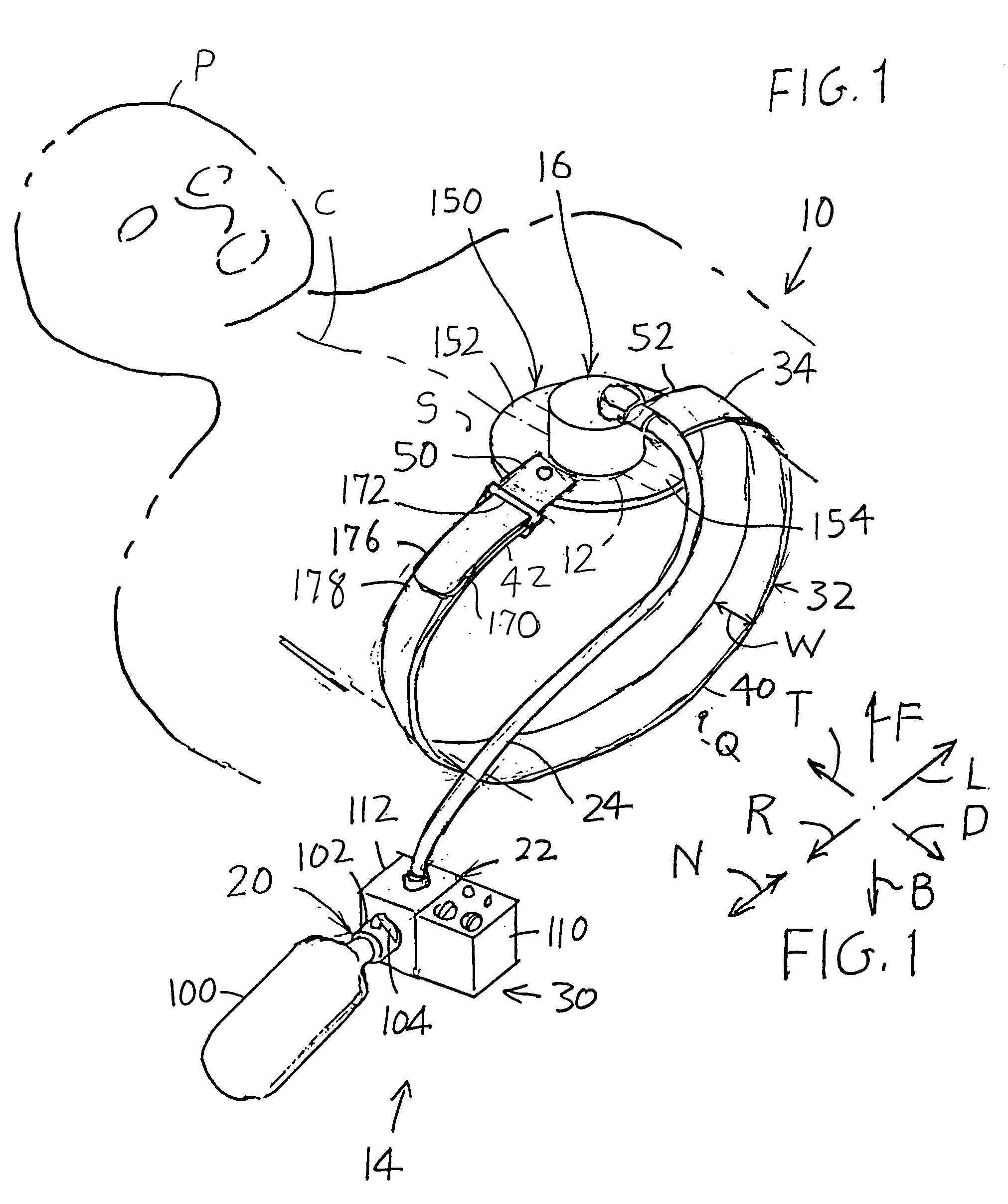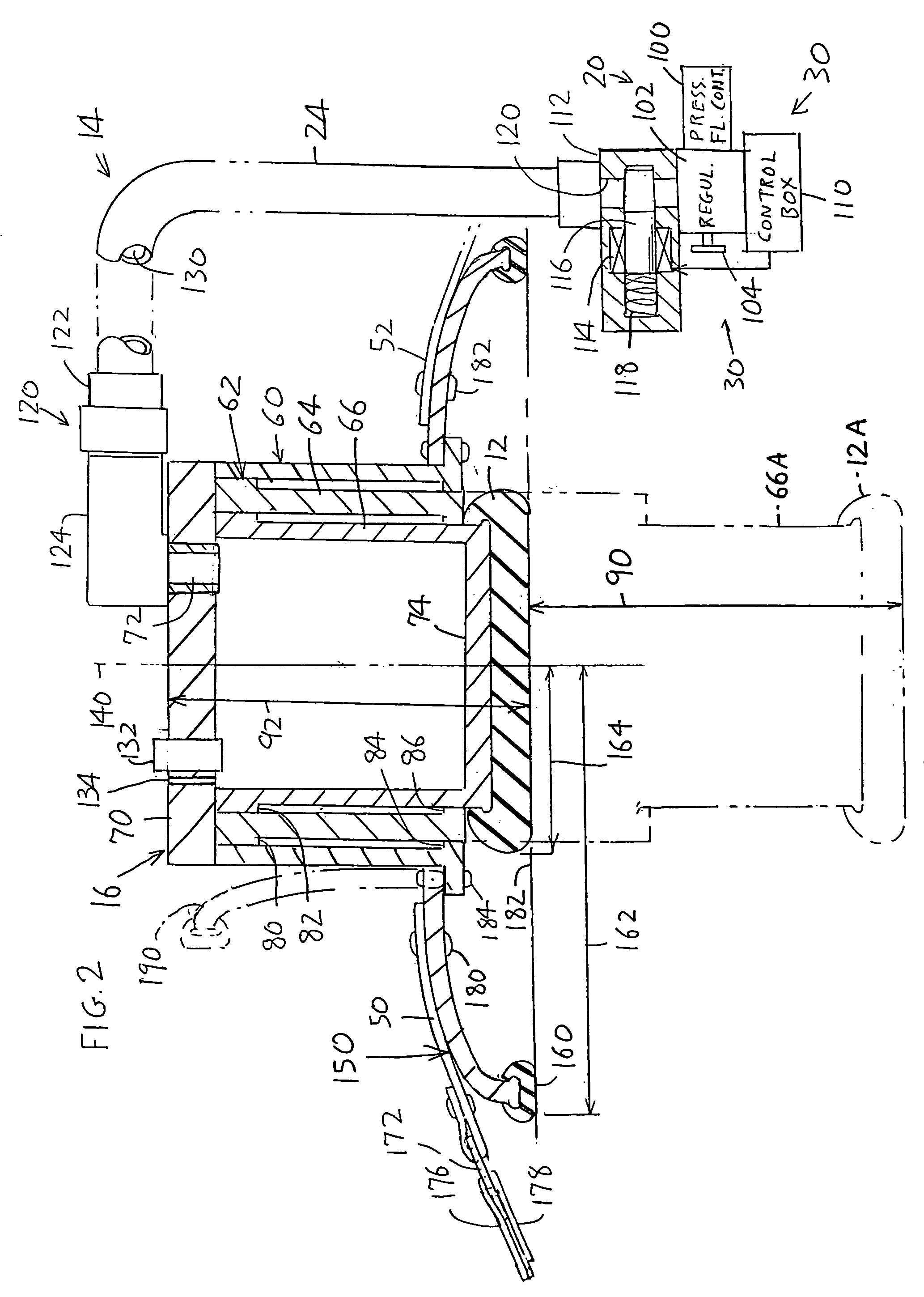Chest compressor
a compressor and chest technology, applied in the field of chest compressors, can solve the problems of inability to remove cellular waste products, sudden decrease in oxygen delivery to cells, large system-wide harm to vital organs, etc., and achieve the effect of stimulating circulation and light weigh
- Summary
- Abstract
- Description
- Claims
- Application Information
AI Technical Summary
Benefits of technology
Problems solved by technology
Method used
Image
Examples
Embodiment Construction
[0012]FIG. 1 illustrates a patient P who has a dangerously low blood circulation such as might occur in a heart attack. An apparatus 10 of the invention includes a compression assembly 14 with a pressing member 12 having a diameter of about three inches, which can be forcefully pushed down against the sternum S of the patient's chest in a series of pulses, to stimulate the heart of the patient. For an adult male patient, the pressing member 12 can press down with a maximum force of about 100 to 120 lbs., in pulses spaced by perhaps ½ to 1 second apart. This mimics the chest compressions applied in CPR (cardiopulmonary resuscitation).
[0013]The compression assembly 14 includes an actuator 16 that forces down the pressing member 12 in pulses, a pressure source 20 that supplies pressured air for energizing the actuator, and a control 22 that controls the application of pressure to the actuator. An elongated flexible tube 24 connects the remote part 30 of the compressor assembly that lie...
PUM
 Login to View More
Login to View More Abstract
Description
Claims
Application Information
 Login to View More
Login to View More - R&D
- Intellectual Property
- Life Sciences
- Materials
- Tech Scout
- Unparalleled Data Quality
- Higher Quality Content
- 60% Fewer Hallucinations
Browse by: Latest US Patents, China's latest patents, Technical Efficacy Thesaurus, Application Domain, Technology Topic, Popular Technical Reports.
© 2025 PatSnap. All rights reserved.Legal|Privacy policy|Modern Slavery Act Transparency Statement|Sitemap|About US| Contact US: help@patsnap.com



